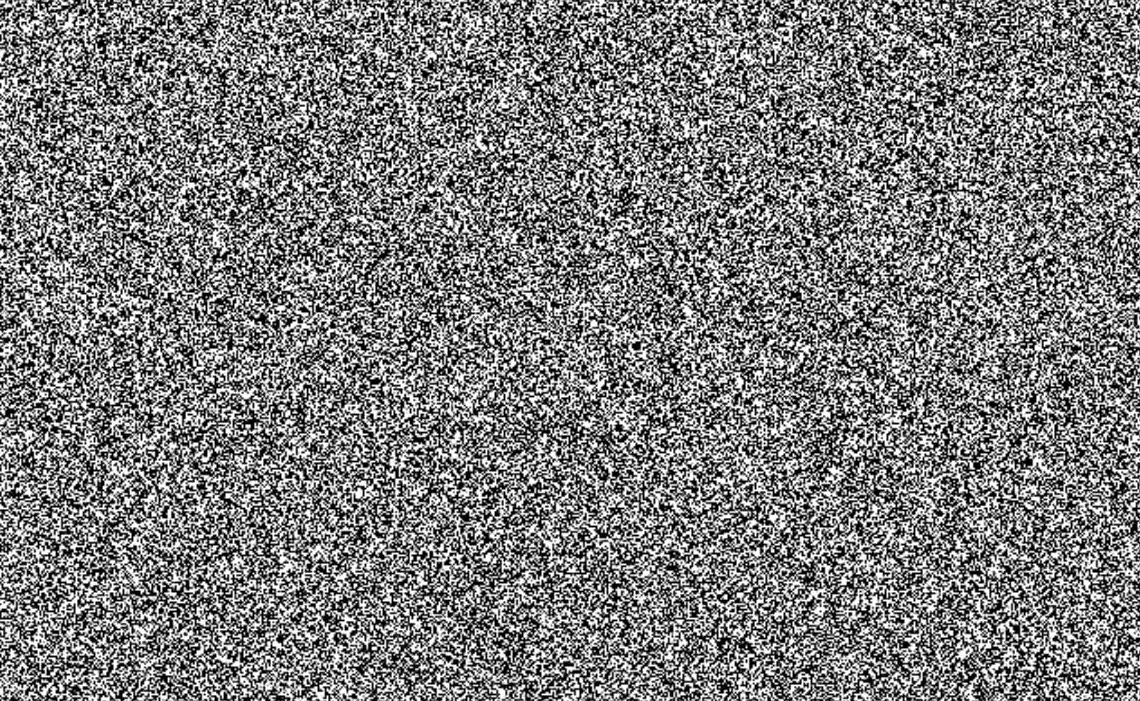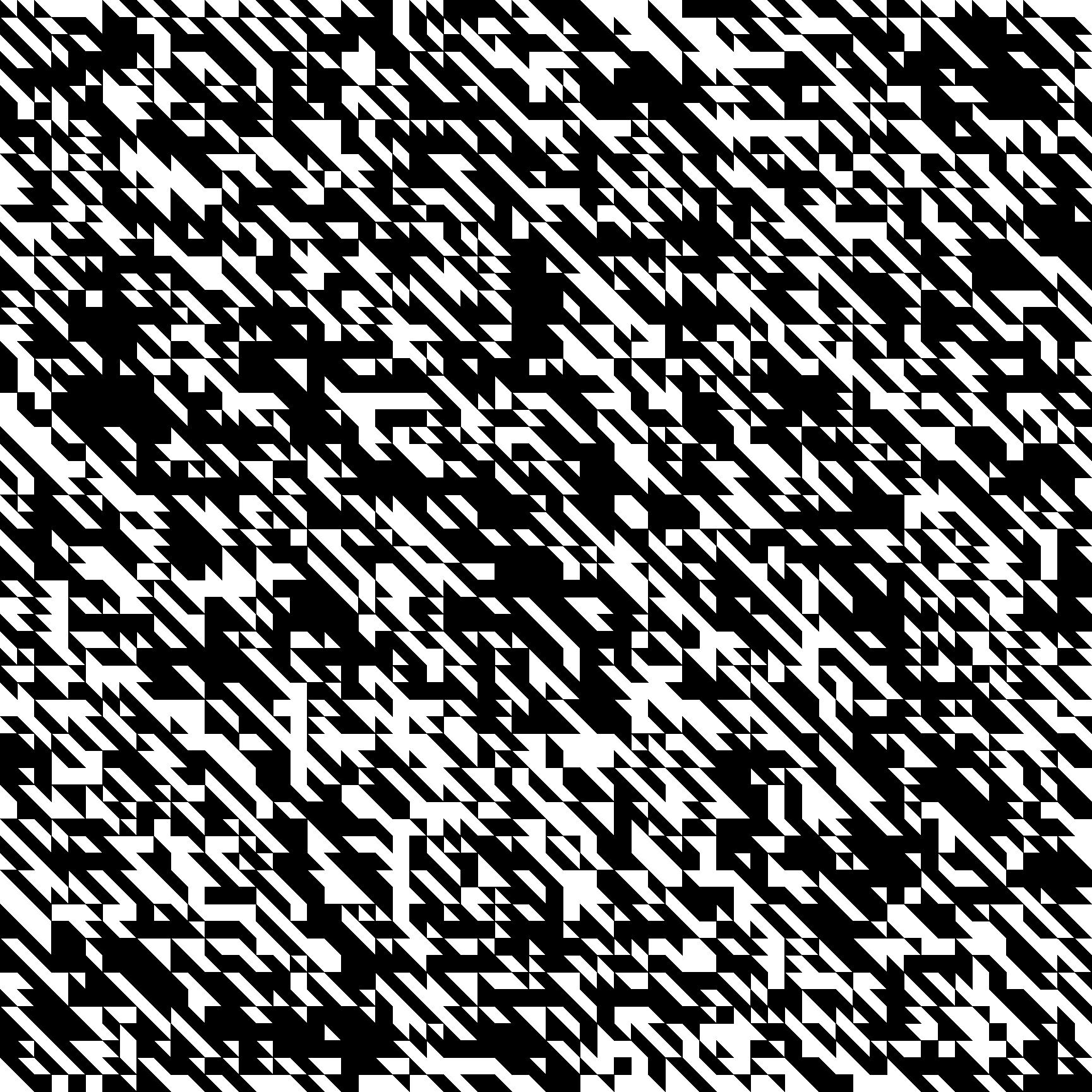
This piece was first left as a review on the website RateYourMusic.com. I was reviewing Music of Changes, a recording of the John Cage piece by David Tudor released in 2001. This writeup immediately succeeded a really important breakthrough I made in my visual arts experimentation, and so I was really excited to write about this. I hope you can tell! Since this piece was written for RYM I couldn't embed any images into it to illustrate my point, and I can now.
Music of Changes reminded me of something that I had been meaning to talk about that pertains to Indeterminacy which is that, concerning randomness, there is actually a very interesting spectrum that exists between things that are homogeneous and things that are heterogeneous. Two images demonstrate the difference:

The first is this, which is white noise. As long as the function that generates this noise is properly random, this has absolutely no input from a human intellect, but as a result it is not very interesting, most people would agree. It is macroscopically homogeneous because if you focus on the whole image you see there's an even distribution of white and black, but no matter what level of detail you look at it from it will end up looking the same so it's microscopically homogeneous as well, without being self similar in the way that a fractal is. Essentially what I'm saying is it's totally uninteresting.

The second is this, which is the image I uploaded to set one of my lists¹. I made this in MS Paint according to the results of an algorithm which is seeded with a randomly generated string of 2700 letters and a few coin flips. I could argue that there was no influence of human intellect involved, but that would be disingenuous because some of you might know that it is clearly based on the artwork for Autechre's AE_Live series, the collection of live recordings of their 2014/2015 tour, made by the Designers Republic. In order to get it to look like that I had to design the algorithm to spit out shapes that vaguely resemble the ones on those covers. This image is macroscopically homogeneous, but microscopically heterogeneous—when one zooms in and explores it there are clearly unique structures that are not repeated and nothing is self similar. There are hundreds of examples of generative art pieces that are totally heterogeneous on all levels of detail as well, such as these pieces by Anders Hoff.
Music of Changes is especially interesting to me as an example of music (a time art) that plays with microscopic heterogeneity contributing to a whole that is more homogeneous. It's a kind of drone in a sense, except that drone can be said to be self similar in its purest form and this is certainly not, but it's also not totally random because John Cage composed it according to instructions from the I-Ching and around the chromatic scale, such that it could be played by a human pianist (with two hands!) on a piano that had 88 keys or thereabouts. That is why something like this is so interesting even if, as another user said, it cannot be enjoyed. There are no ideas here and it's not as though they end up arriving naturally in the performance either, because this is only indeterminate in the stage of composition and not with respects to performance. The ideas arrive as we peruse the piece, when we notice that there's an especially interesting arrangement of sounds here, but now perhaps here there is nothing of any interest.
When it's over, with any luck, the structures and the ideas about them are completely gone from our minds.
P.S. Parts of this review were written according to ostensibly random outcomes given to me by (an online version of) the I-Ching. It's a cumbersome thing, and I only did it to demonstrate that if you're asking it the right questions the end result is mostly indistinguishable from something that is totally determinate. I had planned to put this explanation in the actual body of the review but The Book forbade it, which is interesting I think.
¹ The list I refer to here is my RateYourMusic list of the best musical releases of every year. I have a ranked top 25 for every year from now going back to, as of the time of writing, 1967. Years before then are incomplete, with some number of less than the full 25.